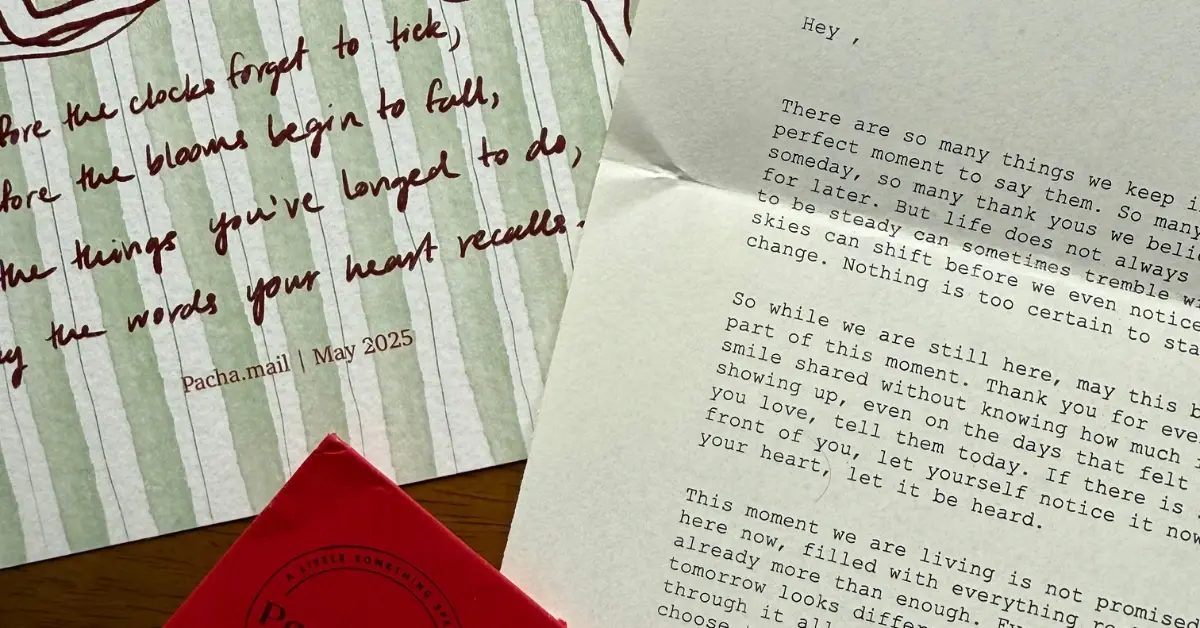Introduction
In today's hyper-connected world, where messages are dispatched and received within seconds, the act of sending a physical letter might seem antiquated. Yet, amidst the barrage of digital notifications, the tactile experience of holding a handwritten note offers a unique sense of connection and intentionality.
The process to send a letter involves more than just pen and paper; it's a deliberate act that conveys thoughtfulness and care. Whether it's a heartfelt message to a loved one or a formal correspondence, letters have a way of making the recipient feel valued.
Learn more about our journey and commitment to meaningful communication.
In this article, we'll explore the enduring relevance of letter writing, delve into the emotional impact of receiving a letter, and provide practical guidance on how to send a letter in today's world.
Table of Contents
- The Enduring Charm of Letters
- Emotional Impact of Receiving a Letter
- Practical Guide: How to Send a Letter
- Sending Letters Internationally
- Adding Tracking to Your Letters
- Letters vs. Digital Communication
- Incorporating Letters into Daily Life
- Quick Takeaways
- Conclusion
The Enduring Charm of Letters
Despite the convenience of digital communication, letters have maintained their place as a meaningful form of expression. The act of writing, sealing, and sending a letter requires time and intention, making it a powerful gesture in personal and professional contexts.
Explore the history of letter writing and its evolution over time.
Letters serve as tangible memories, often kept and cherished for years. They provide a physical connection between sender and recipient, something that digital messages can't replicate.
Emotional Impact of Receiving a Letter
Receiving a letter can evoke a range of emotions—surprise, joy, nostalgia. Unlike instant messages, letters arrive after a period of anticipation, heightening their emotional impact.
Discover the business benefits of handwritten notes and their lasting impressions.
Studies have shown that handwritten notes can strengthen personal bonds and convey sincerity more effectively than digital communication. The personal touch of a letter often resonates deeply with recipients, making them feel appreciated and valued.
Practical Guide: How to Send a Letter
Step 1: Write Your Letter
Choose quality paper and a reliable pen. Begin with a greeting, followed by the body of your message, and conclude with a closing and your signature.
Step 2: Address the Envelope
Write the recipient's name and address in the center of the envelope. Include your return address in the top left corner.
Step 3: Affix Postage
Place the appropriate postage stamp in the top right corner. Ensure it covers the cost based on the letter's weight and destination.
Step 4: Mail the Letter
Drop the letter into a mailbox or take it to your local post office. For important correspondence, consider requesting a receipt or tracking.
Sending Letters Internationally
Sending a letter abroad involves additional considerations:
-
Correct Address Format: Ensure the recipient's address follows the international format of the destination country.
-
Customs Declarations: For certain items, a customs form may be required.
-
Postage Rates: International postage varies; consult your postal service for accurate rates.
For example, the USPS offers First-Class Mail International® service, allowing you to send letters to over 180 countries. A 1 oz letter can be sent using a Global Forever® stamp, which currently costs $1.65 and never expires, even if the postage price goes up .
Adding Tracking to Your Letters
For added security, especially when sending important documents, consider using services that offer tracking:
-
Certified Mail: Provides proof of mailing and delivery.
-
Registered Mail: Offers maximum security with detailed tracking.
-
Priority Mail: Includes tracking and expedited delivery.
These services may incur additional fees but provide peace of mind, ensuring your letter reaches its intended recipient.
Letters vs. Digital Communication
While emails and texts are efficient, they often lack the personal touch that letters provide. Letters can convey emotions and sentiments more profoundly, making them ideal for heartfelt messages, condolences, or congratulations.
Moreover, letters are free from digital distractions, allowing both the sender and recipient to engage more deeply with the content.
Incorporating Letters into Daily Life
For creative ways to share your thoughts, consider crafting gifts using letters and poems.
- Pen Pals: Establish regular correspondence with friends or family.
- Thank You Notes: Send handwritten notes to express gratitude.
- Special Occasions: Celebrate birthdays, anniversaries, or achievements with a personal letter.
- Journaling: Write letters to yourself as a form of reflection.
Learn about the psychological benefits of expressing gratitude through letters.
Quick Takeaways
- Letters offer a personal, tangible connection in an increasingly digital world.
- The process to send a letter involves thoughtful steps that convey care and intention.
- International letter sending requires attention to address formats and postage rates.
- Tracking services add security for important correspondence.
- Incorporating letter writing into daily life can enrich personal relationships.
Have questions? Reach out to us for more information.
Conclusion
In an era dominated by instant communication, the act of sending a letter stands out as a meaningful gesture. It reflects a willingness to invest time and thought into connecting with others. Experience the joy of receiving heartfelt messages by exploring what's inside our letters.
Whether it's a simple note or a detailed message, letters have the power to convey emotions and sentiments that digital messages often can't capture. By embracing letter writing, we can foster deeper connections and preserve the art of meaningful communication.
